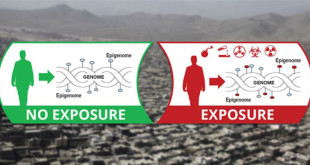DARPA’s role and investments in defense-related research and development (R&D), including biological defense, has potential significance for the science and technology available to address the Coronavirus Disease 2019 (COVID-19) pandemic and any future biological threats. In 2018, the Biological Technologies Office (BTO) of the Defense Advanced Research Projects Agency (DARPA) …
Read More »DARPA NOW developing manufacturing platform that synthesizes any nucleic-acid based medical countermeasures for pandemic military stabilization operations
“Between 2011 and 2018, WHO tracked 1483 epidemic events in 172 countries. Epidemic-prone diseases such as influenza, severe acute respirator syndrome (SARS), Middle East respiratory syndrome (MERS), Ebola, Zika, plague, yellow fever and others are harbingers of a new era of high-impact, potentially fast-spreading outbreaks that are more frequently detected …
Read More »Health impacts of Radionuclides in Drinking Water and technology solutions to remove them
Radionuclides are types of atoms that are radioactive. The most common radionuclides in drinking water are radium, radon and uranium. Radionuclides occur naturally as trace elements in rocks and soils as a consequence of the “radioactive decay” of uranium-238 (U-238) and thorium-232 (Th-232). As these rocks weather, the resulting clays …
Read More »Internet of Medical Things (IoMT) technologies revolutionizing healthcare, telemedicine and Real time Soldier health Monitoring
A new paradigm, known as the Internet of Things (IoT), has an extensive applicability in numerous areas, including healthcare. IoT stands for the “Internet of Things.” It refers to the network of physical devices, vehicles, appliances, and other items that are embedded with sensors, software, and connectivity, allowing them to connect …
Read More »Soft Material Enabled Soft Electronics for Medicine, Healthcare, and Human-Machine Interfaces
Since the development of the field effect transistor in 1920s, the electronics industry has focused on high speed and large capacity devices such as microprocessors and random access memories. However, the recent emergence of personalized and mobile electronics has diversified the research efforts from performance-oriented research to human-friendly topics. Conventional bulky …
Read More »Synthetic Biology is the core science for future Defence Technology, according to DARPA
Synthetic biology is the application of science, technology and engineering to facilitate and accelerate the design, manufacture and/or modification of genetic materials in living organisms, as defined by the European Commission. It envisions the redesign of natural biological systems for greater efficiency, as well as create new organisms as well as …
Read More »Researchers employ biomimetics for design of perfect Drones for delivery services, Search and rescue to counter drone missions
Unmanned aerial vehicle technology is advancing rapidly, and drones are getting smaller by the day. Militaries are now employing Micro, Mini & Nano UAVs into their operations. They provide situational awareness to a small group of soldiers by flying several stories above them for 10-20 minutes at a time before …
Read More »DARPA DIGIT employs gene editing to diagnose COVID-19 and other pandemics and also determine the strain, their origin
Major infectious diseases, like COVID-19, often go undetected until they spread. Spotting the problem in a community isn’t easy, in part because infectious disease detection, which is the foundation for surveillance and contact tracing, can take hours, if not days. Compounding the problem is that traditional detection assays are designed …
Read More »Lab-on-Chip devices allow faster and cheaper DNA sequencing and biochemical detection to chemical synthesis
Lab-on-chip is an integrated miniaturized device that allows researchers to perform all the operations from sample collection to final analysis onto the same chip. Theoretically, LOC technology has the potential to carry out almost any laboratory procedure on a miniaturized scale. This could range from DNA sequencing and biochemical detection …
Read More »Rising CBRN threats require Decontamination solutions and Technologies for soldiers, military equipment and vehicles
According to the University of Maryland’s Global Terrorism Database, there were a total of 143 attacks – 35 biological, 95 chemical, and 13 radiological – using CBRN weapons across the world from 1970 to 2014. The relative ease with which malicious actors could obtain many of the materials and know-how …
Read More » International Defense Security & Technology Your trusted Source for News, Research and Analysis
International Defense Security & Technology Your trusted Source for News, Research and Analysis









